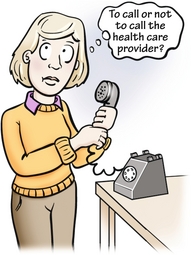 TIP FOR THE BEGINNING NURSING STUDENT
TIP FOR THE BEGINNING NURSING STUDENT
Angina pectoris refers to chest pain that is most often caused by a lack of oxygen to myocardial tissue and occurs as a result of atherosclerosis (clogged blood vessels) or spasm of the coronary arteries. The pain may be relieved by rest and vasodilation of the coronary arteries by medication, such as nitroglycerin. The usual protocol for administering nitroglycerin to a hospitalized client is to administer a total of 3 tablets, 5 minutes apart each, to relieve the chest pain. In other words, a nitroglycerin tablet is administered, and if the pain is not relieved in 5 minutes, another is administered. This is repeated in 5 minutes, 1 more time, if the pain is not relieved by the second nitroglycerin tablet. After administering 3 nitroglycerin tablets, if the pain is still unrelieved, the health care provider is called. It is also important for the nurse to monitor the client’s blood pressure because nitroglycerin causes a drop in the blood pressure. You will learn about angina pectoris and nitroglycerin during your medical-surgical nursing course. Because this is a major, life-threatening disorder, it is critical that you learn about its signs and symptoms and immediate treatment.

 Priority Classification System
Priority Classification System





